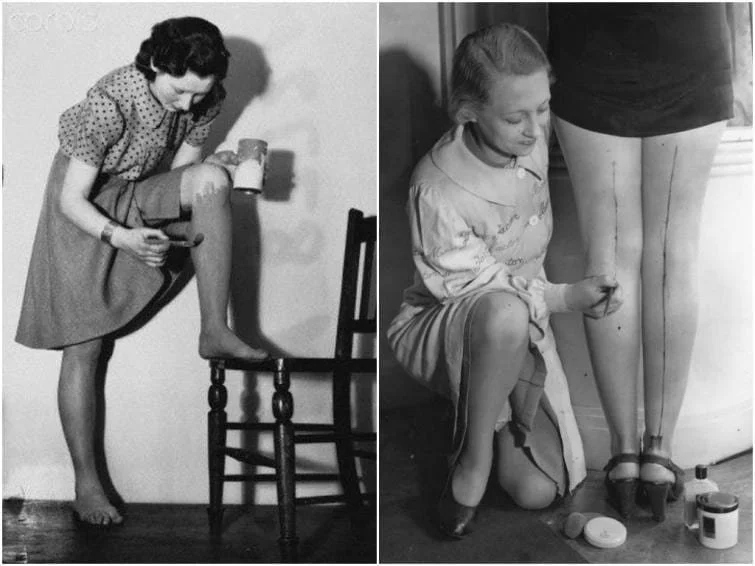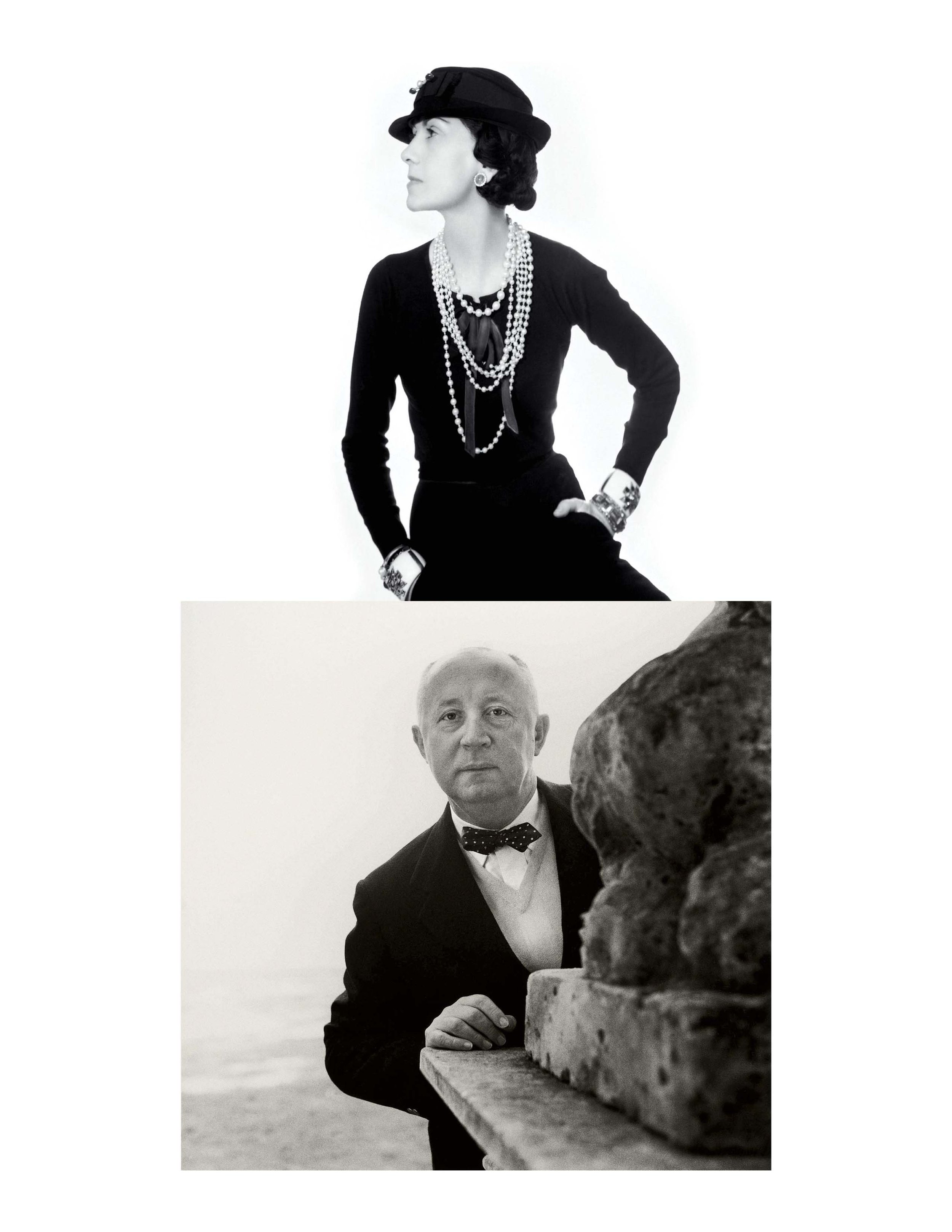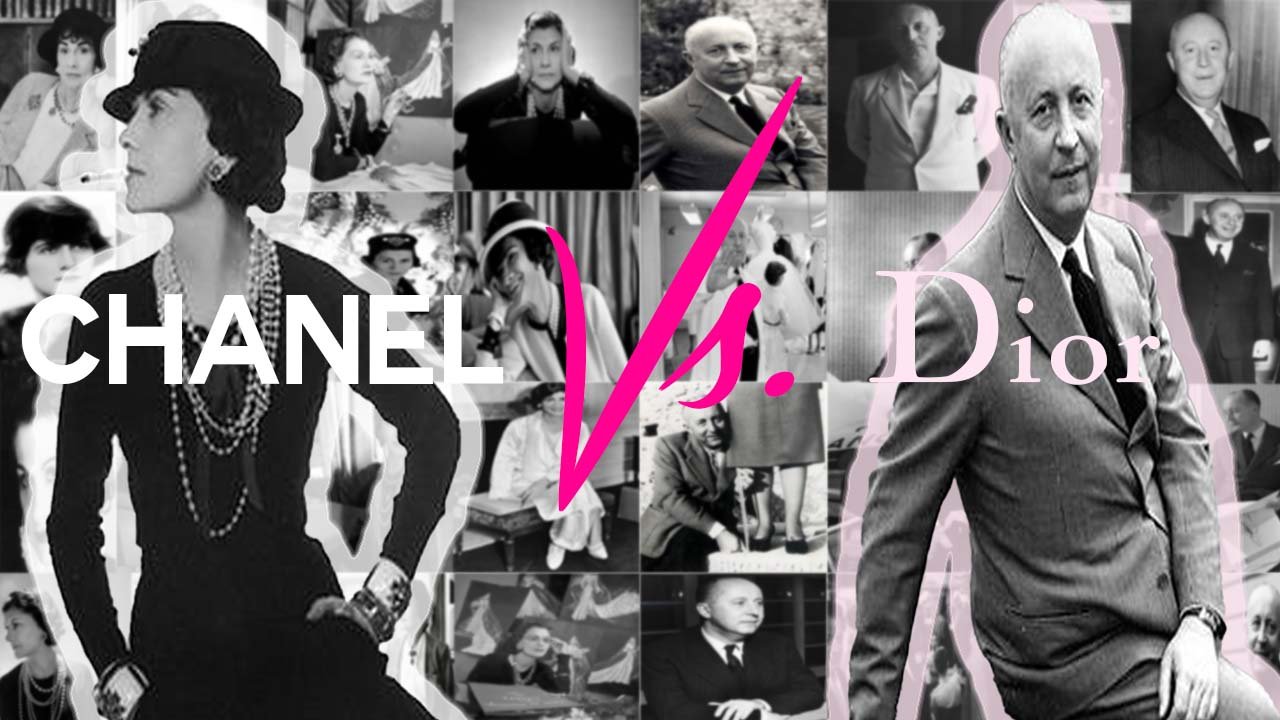Fashion History 101 | Chanel vs. Dior
Hey, fashion besties and fellow fashion history lovers!
Did you know that Gabrielle “Coco” Chanel didn’t like Christian Dior? I discovered this rivalry while conducting research for a trend forecast report. I became so fascinated by both Gabrielle “Coco” Chanel and Christian Dior that I had to share their stories (and “beef”) with you!
For a quick backstory, Chanel had a turbulent upbringing and would come to live in a convent where she learned how to sew through the help of nuns. Her jersey dresses and cardigan suits in the 1920s coincided with women’s right to vote in the US and cemented the freedom of women from restrictive styles of previous eras. Garments such as corsets, the bustle, and crinoline had no place in Chanel’s atelier. Chanel viewed her styles as empowering, especially those that borrowed from menswear. She was also the first designer to interest women in knitted pullover sweaters about the time of World War I. She continued to be the leading Parisienne fashion designer well into the 1930s but closed her store during World War II and ceased operations until 1954. (Some viewed her comeback from retirement as a diss to Christian Dior, more on that in a bit!)
Fun fact: During WWII, all resources were rationed, especially fabric. Everyone, including women, had to be pragmatic with what they used and how they used it. Rationing led to hosiery becoming unavailable and women painting seams on their legs with gravy to mimic the legwear look of the day!
During this time, Christian Dior was serving as an officer in the French army but was dreaming of the confections that would catapult him to the forefront of the fashion industry, especially couture. Dior was the second of five children and lost his mother and older brother at a young age. He compromised on his art and design dreams for the sake of his family and would graduate with a degree in Political Science from the École des Sciences Politiques to appease his disapproving father. When France surrendered to Germany in 1940, Dior headed back to Paris and worked for couturier Lucien Lelong before branching out on his own. With financial backing, Dior was able to create his designs. Heavily influenced by the women around him, especially his sister Catherine, with whom the “Miss. Dior” fragrances are named after. Dior found instantaneous success with his first couture collection in Paris. His Spring 1947 collection became known as “The New Look.” His designs of the late 40s and early 50s have been described as romantic and were seen at the time as a return to luxurious fashions of the past. Dior used the emphasis on soft curves and shapes which required women to return to more confining underclothing than had been seen since before 1920.
Chanel detested Dior. She has been quoted as saying: “Look how ridiculous these women are, wearing clothes by a man who doesn’t know women, never had one and dreams of being one.” She didn’t stop there, either. At various points she was quoted as saying, “Dior doesn't dress women. He upholsters them.” and that a woman sitting down in a Dior dress looked like ‘an old armchair.’ She also accused Dior of dragging women back to 19th-century ideals of femininity – that women were objects to be admired by men. While Chanel did have a point, as we can associate the new look’s evolution parallel to women’s places “in the home,” it seems more of a competitive remark and personal dig at a male designer who was being ushered into the ranks of Paris couture. Dior’s “New Look” collection returned Parisian couture to the forefront of the fashion industry since WWII. We brought up earlier that Chanel came back to fashion in 1954 and that some viewed it as a personal dig at Dior. While Chanel did not like the designs of Dior or his male contemporaries, Chanel’s goal was to not make women feel as if their dress was a disguise, but rather comfortable and timeless. Chanel would not win the competition during the early 1950s but she would re-establish herself later on in the decade and well into the 1960s when her Chanel suit became the quintessential silhouette and must-have fashion look. She was finally able to shed her “1920s skin.” Dior, unfortunately, passed away in 1957 but his legacy endures and is still one of the most celebrated haute couture designers of all time.
What do you think of the Chanel and Dior rivalry? Follow me to learn more about fashion history!
Bisous,
Victoria+Alpha
Works Cited
Baker, Lindsay. “The formidable women behind the legendary Christian Dior.”
BBC, January 29, 2019.
George, Christina. “Critics Scoffed but Women Bought: Coco Chanel’s Comeback Fashions Reflect the Desires of the 1950’s American Woman.”
https://digitalcommons.calpoly.edu/cgi/viewcontent.cgi?article=1048&context=forum.
Cal Poly, February 07, 2022.
Kingandallen.com Staff. “Dior vs. Chanel: One of Fashion’s Great Rivalries.”
https://kingandallen.co.uk/journal/2019/dior-vs-chanel-one-of-fashions-great-rivalries/.
King and Allen, February 07, 2022.


